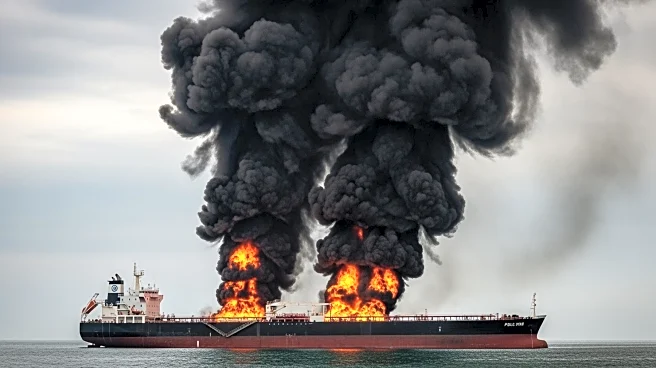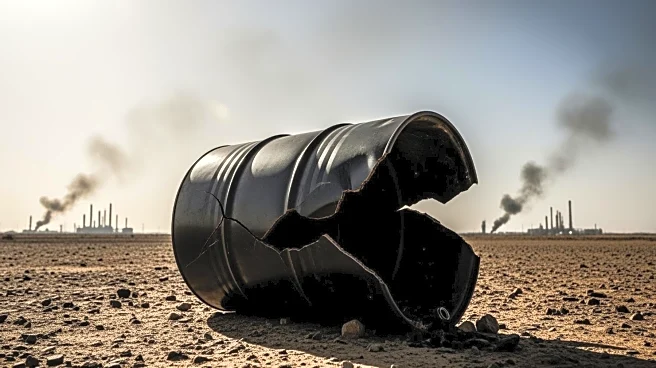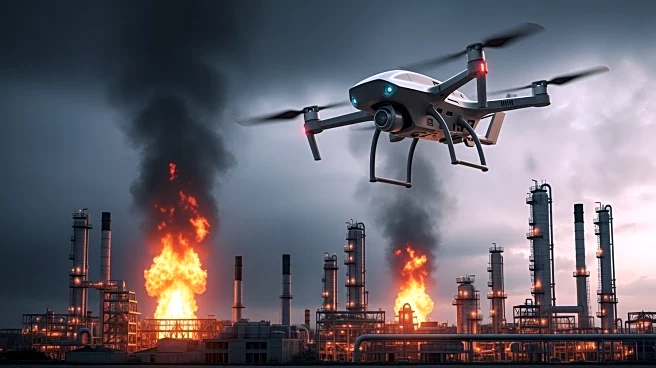What's Happening?
Ukrainian drone strikes have significantly impacted Russian oil infrastructure, particularly targeting the Feodosia oil terminal in Crimea. Satellite images confirm the destruction of at least 11 fuel
storage tanks, with additional damage to others. These attacks have reduced Russian oil refinery output by 500,000 barrels per day since August, leading to fuel-export restrictions and gasoline shortages in regions like Crimea. The International Energy Agency reports that these disruptions have pushed Russia's oil-export revenues to a three-month low of $13.4 billion in September.
Why It's Important?
The reduction in Russian oil output and export revenues could have significant implications for global energy markets, potentially affecting oil prices and supply chains. The ongoing conflict and resulting infrastructure damage highlight the vulnerabilities in Russia's energy sector, which is a critical component of its economy. The situation underscores the broader geopolitical tensions between Ukraine and Russia, with potential ripple effects on international relations and energy security.
What's Next?
The International Energy Agency expects the disruptions to suppress Russia's refining capacity until at least mid-2026. This prolonged impact could lead to further economic challenges for Russia and may prompt additional strategic responses from both Russia and Ukraine. The international community, particularly countries dependent on Russian oil, will be closely monitoring the situation for potential shifts in energy policy and market dynamics.












